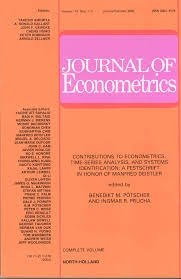
Li, M., Koopman, \.J., Lit, R. and Petrova, D. (2020). Long-term forecasting of El Niño events via dynamic factor simulations Journal of Econometrics, 214(1):46--66.
-
Affiliated authorsSiem Jan Koopman, Stefka Petrova
-
Publication year2020
-
JournalJournal of Econometrics
We propose a new forecasting procedure which particularly explores opportunities for improving the precision of medium and long-term forecasts of the Niño3.4 time series that is linked with the well-known El Niño phenomenon. This important climatic time series is subject to an intricate dynamic structure and is interrelated to other climatological variables. The procedure consists of three steps. First, a univariate time series model is considered for producing prediction errors. Second, signal paths of the prediction errors are simulated via a dynamic factor model for the errors and explanatory variables. From these simulated errors, ensemble time series for Niño3.4 are constructed. Third, forecasts are generated from the ensemble time series and their sample average is our final forecast. As part of these dynamic factor simulations, we also obtain the forecast of the El Niño event which is a categorical variable. We present empirical evidence that our procedure can be superior in its forecasting performance when compared to other econometric forecasting methods.